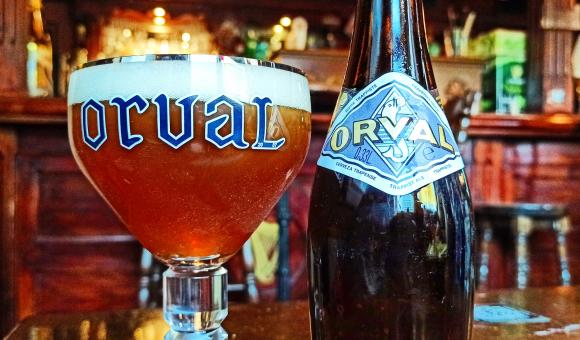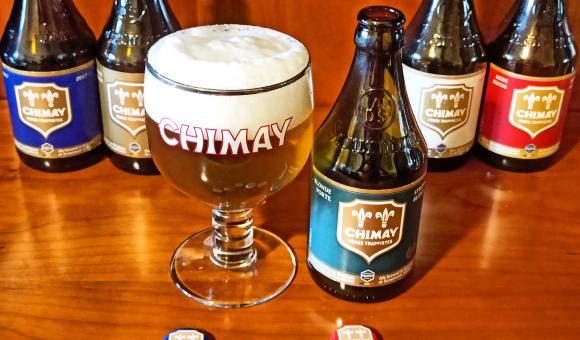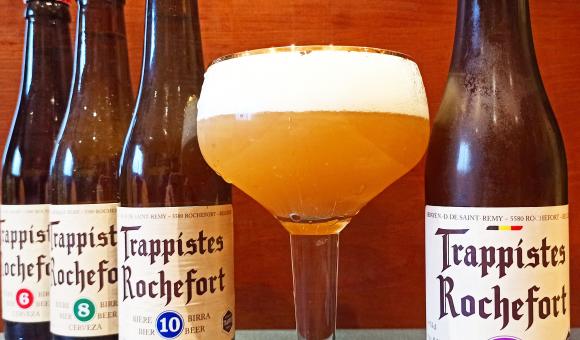If Belgian beer is today a highly appreciated product by beer lovers all around the world, it is partly thanks to the work carried out by monks in abbeys and monasteries in the region during the Middle Ages. At a time when hygienic conditions were disastrous and diseases were spreading uncontrollably, it was not an easy task to find sources of drinking water. That is why beer emerged as a much safer and healthier drink, since cooking eliminates the vast majority of bacteria present in the water, and alcohol serves as a preservative against harmful organisms. In addition, due to its content of cereals, it was considered a very nutritious food, ideal to combat famine or to consume during religious fasts.
In this context, many monasteries chose to brew their own beer, both for self-consumption and to subsist on sales to pilgrims and guests. The monks of these early "brewery abbeys" became true masters of fermentation, experimenting with various spices, herbs and plants such as gruit or hops to improve preservation. But one of the fundamental milestones in the history of beer took place in 1664 with the foundation of the Cistercian Order of the Strict Observance or Trappist, a religious order that has among its fundamental principles the "ora et labora" doctrine (to pray, read and do manual work) and the self-sufficiency. Many of the Trappist abbeys decided to open breweries on their premises, with the monks themselves taking care of the daily work. The popularity of Trappist beers grew tremendously during the 20th century, so to protect their renown and authenticity, the International Trappist Association was created in 1997.
More than 170 monasteries of the Order exist in the world, but only 14 of them continue to brew beer nowadays. Not all beers can bear the official Trappist seal, since the requirements to have it are very strict: it must be produced inside or near the monastery, monks must take part in its elaboration, and the profits it generates must go to the maintenance of the community or to social works. Currently just 11 monasteries have this prestigious distinction, and 3 of these abbeys are located in Wallonia. Let's learn a little more about them.
We start the route in the historic region of Gaume, and more specifically in Villers-devant-Orval. In this village is located the Notre-Dame d'Orval abbey, founded in 1132 and destroyed during the Napoleonic wars. After its reopening in 1931, the monks chose to install a cheese factory and a brewery to finance themselves, where they only make two references: the classic Orval, a complex Belgian Pale Ale with a unique flavor thanks to the yeasts and hops used; and the Petite Orval, a very light Patersbier for internal consumption, which can only be tasted on rare occasions in the monastery. As a curiosity, the beer logo recalls the legend that gives its name to the abbey and the brewery. A great Italian countess visited the place, and unfortunately her wedding ring fell into a river. He prayed to get it back, until a trout emerged from the water with the ring in its mouth. The countess exclaimed: "This is truly a valley of gold (Val d'Or)!”, and from that expression the name Orval was derived.
We travel to the province of Hainaut, where the Notre-Dame de Scourmont abbey is located, home of the famous Chimay beer. In 1850 a small community of monks settled there, and they had to work hard to convert a barren land into a fertile and productive area. As well as some prestigious cheeses, the monks brew beers under the name of Chimay, in honor of the town closest to the abbey. They were the first brewers to use the term "Trappist Ale" on their labels, and nowadays they produce around 123.000 hectoliters a year, which are sold all over the world and bring huge profits. They currently have 5 fixed references in their catalogue, in addition to several limited and special editions aged in barrels: the Chimay Rouge or Première , a sweet and fruity Dubbel ; the Chimay Bleue or Grande Réserve, a robust and classic Strong Dark Ale with 9 % alcohol; the Chimay White or Cinq Cents, a golden and dry Tripel; the Chimay Dorée or Gold, a Patersbier usually consumed by the monks themselves; and the Chimay 150 or Green, created in 2012 to celebrate the 150th anniversary of the brewery and relaunched a few months ago.
We conclude this beer journey in the province of Namur, visiting the abbey of Notre-Dame de Saint-Rémy in the town of Rochefort, where the beer of the same name is brewed. The motto of this 15th century monastery is "Curvata, resurgo" (I fall, I get up), because although it has suffered countless wars, famines and epidemics, it has always managed to overcome adversity. The first brewery inside the abbey dates back to 1595, being the main source of income for the monks to this day, although they also produce cheese. They opened a new factory in 1952 and in 2010 they suffered a fire, but as they have done other times in history, they rehabilitated it to continue with brewing as soon as possible. Today just 6 monks from the community take care of the production, and in their current range they have 4 references: the Rochefort 6 (red cap), the oldest recipe of the brewery; the Rochefort 8 (green cap), the most produced, a roasted, fruity and dry Strong Dark Ale; the Rochefort 10 (blue cap), their most powerful beer, a Quadrupel with aromas of smoke, nuts, chocolate and ripe fruit; and the Rochefort Triple Extra (purple cap), a Tripel that has been re-brewed after a century without making it, and which has been the first novelty of the brewery in the last 65 years.
These are the three Trappist breweries located in Wallonia, synonymous of quality and know-how in the brewing world, adapted to the new times but without giving up their spectacular tradition and history.
CTA
Inscrivez-vous
Remplissez le formulaire de candidature et adhérez à la Charte des ambassadeurs de la marque




